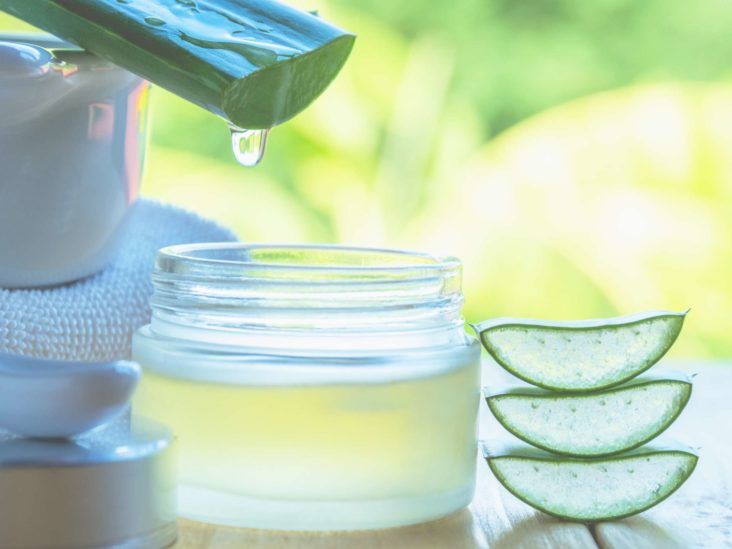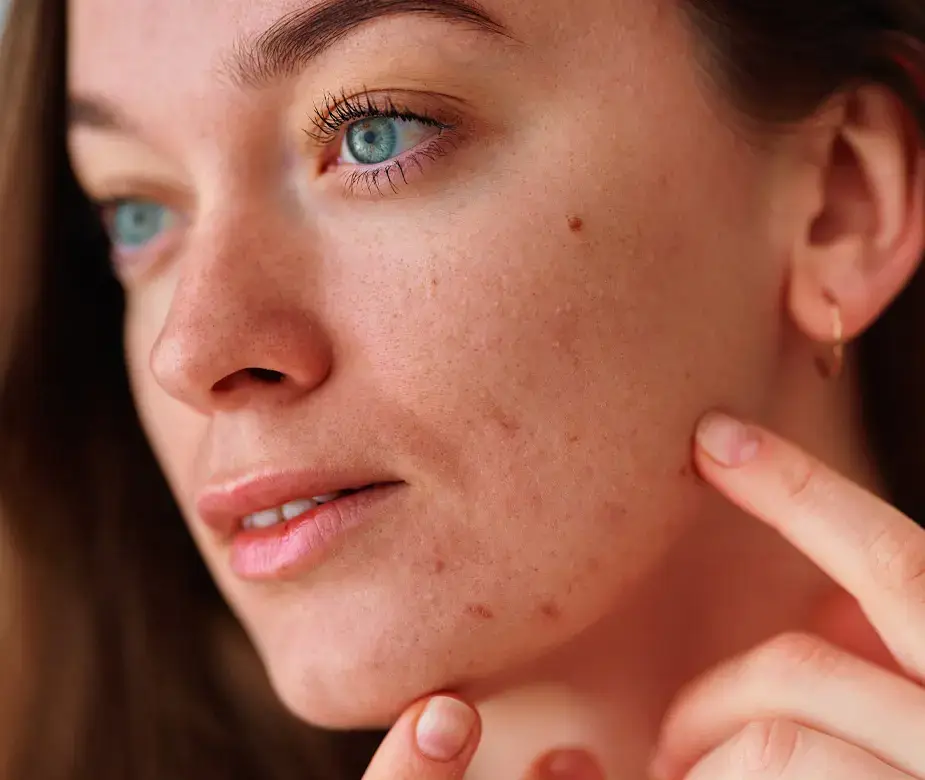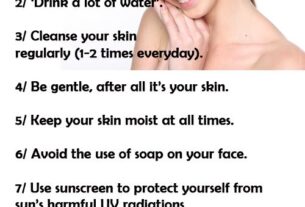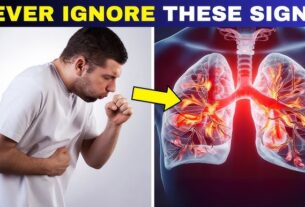Acne is a skin condition that occurs when your hair follicles become plugged with oil and dead skin cells. It causes whiteheads, blackheads or pimples. Acne is most common among teenagers, though it affects people of all ages.
People of all races and ages get acne, but it is most common in teens and young adults. When acne appears during the teenage years, it is more common in males. Acne can continue into adulthood, and when it does, it is more common in women

- Acne breakouts can happen anywhere on your skin. The most common sites include the face and neck, shoulders, back, and chest.
- Your skin has tiny holes called pores that can become blocked by oil, bacteria, dead skin cells, and dirt. When this occurs, you may develop a pimple, sometimes also called a zit or blemish.
- If you get pimples often, especially several at once repeatedly, you may have acne. In other words, acne is the skin condition that causes pimples.
- Acne doesn’t pose a serious risk to your overall health, it can still be painful, particularly if you have severe acne. Over time, acne might also cause scarring.
- There’s no denying that acne can contribute to emotional distress. Acne and acne scars on your face and other visible body locations can affect self-esteem and self-confidence, and they can even contribute to feelings of anxiety and or depression.
- If you live with acne, know that it’s a common condition. Keep in mind, too, that acne is very treatable. A number of effective treatments exist, so you have options for reducing the number of pimples you get and minimizing your chances of scarring.
Types of Acne:
If you have acne, you might notice a mix of pimple types.
Whiteheads and blackheads, both also referred to as comedones, are the most common acne lesions.
- Whiteheads: or closed comedones, form as raised bumps under the surface of your skin. They remain flesh-colored.
- Blackheads: or open comedones, open at the surface of your skin. Oxygen in the air (not dirt) gives the top of these pimples their darker appearance.
- Inflammatory lesions, which are more likely to cause scarring of your skin, include
- Papules: These small, red, raised bumps are caused by inflamed or infected hair follicles.
- Pustules: These small red pimples have pus at their tips.
- Nodules: Large, painful solid lesions that are lodged deep within the skin.
- Severe nodular acne (sometimes called cystic acne): Deep, painful, pus-filled lesions.
Causes of Acne:
Doctors and researchers believe that one or more of the following can lead to the development of acne:
- Excess or high production of oil in the pore.
- Buildup of dead skin cells in the pore.
- Growth of bacteria in the pore.
The following factors may increase your risk for developing acne:
Hormones. An increase in androgens, which are male sex hormones, may lead to acne. These increase in both boys and girls normally during puberty and cause the sebaceous glands to enlarge and make more sebum. Hormonal changes related to pregnancy can also cause acne.
- Family history. Researchers believe that you may be more likely to get acne if your parents had acne.
- Medications. Certain medications, such as medications that contain hormones,
- corticosteroids & lithium, can cause acne.
Age. People of all ages can get acne, but it is more common in teens.

The following do not cause acne, but may make it worse.
- Diet. Some studies show that eating certain foods may make acne worse. Researchers are continuing to study the role of diet as a cause of acne.
- Stress.
- Pressure from sports helmets, tight clothes, or backpacks.
- Environmental irritants, such as pollution and high humidity.
- Squeezing or picking at blemishes.
- Scrubbing your skin too hard.
Acne occurs when the pores of your skin become blocked with oil, dead skin, or bacteria. Each pore of your skin opens to a follicle. The follicle is made up of a hair and a sebaceous (oil) gland. The oil gland releases sebum (oil), which travels up the hair, out of the pore, and onto your skin. Sebum helps keeps your skin lubricated and soft. One or more mishaps in this lubrication process can contribute to acne.
Acne might occur, for example, when:
- Your follicles produce too much oil
- Dead skin cells accumulate in your pores
- Bacteria build up in your pores
Any of these concerns can lead to pimples, which develop when bacteria grow in a clogged pore and the oil can’t escape.
Symptoms of Acne :
Acne can be found almost anywhere on your body, but you’ll most commonly notice breakouts on your:
- Face and neck
- Back
- Shoulders
- Chest
Pimples can give your skin a rough, uneven texture.
With acne, you might also experience:
skin discoloration, including dark patches or spots (hyperpigmentation) and redness
swelling and inflammation
pain and tenderness when touched or not
Acne breakouts can also cause scarring or discoloration on your skin.
Popping pimples can raise your chances of scarring, so avoid squeezing — no matter how tempting it feels to get rid of the pimple immediately — and try these tips.
1. Once a pimple develops, it can take anywhere from a few days to several weeks to completely clear up.
2. Acne breakout can take a lot longer to heal and clear, especially without treatment
• What are the risk factors for developing acne?
Experts still don’t know exactly why some people experience acne and others don’t.
That said, they do recognize a number of risk factors can contribute to or worsen acne, including:
• hormonal changes due to pregnancy or puberty
• Polycystic Ovarian Syndrome(PCOS) and other endocrine conditions
• cigarette smoking
• poor sleep
• Stress
• cleansers, creams, moisturizers, and other beauty products with high oil content
• certain medications, including lithium, some types of hormonal birth control, anticonvulsants, and steroid
• a family history of acne

Getting a diagnosis:
If you suspect you have acne, a good next step involves getting a diagnosis from a board-certified dermatologist.
A dermatologist can make a diagnosis by examining your skin. They can help identify the types of lesions and their severity to develop a treatment plan that works for you.
Treatment of Acne:
Treatment for acne generally depends on its severity.
Mild
You can use over-the-counter (OTC) medicated creams, cleansers, and spot treatments to help address pimples as they pop up.
Common ingredients you’ll find in acne creams and gels include:
- Benzoyl peroxide. This ingredient helps dry out existing pimples, prevents new ones from forming, and kills acne-causing bacteria.
- Salicylic acid. This ingredient helps exfoliate your skin to prevent pores from getting clogged with acne-causing bacteria.
For severe acne, a dermatologist may recommend treatment that combines one or more of the following: - Oral antibiotics
- Benzoyl peroxide
- Topical antibiotics
- Topical Retinoids
- Acne home remedies:
You’ve probably come across any number of acne home remedies. But, as you might have already realized, these remedies don’t always work — some might even make acne worse.
Instead of putting toothpaste on your face, try these at-home tips to help clear up acne and help prevent future breakouts: - Apply tea tree oil
- Apply Aleovera
- Use a Honey Mask
- Refresh your face with green tea
- Avoid touching your face
- Never squeeze or pick pimples. It makes scarring more likely, and it can also spread bacteria and excess oil.
- A dermatologist can offer more tips and guidance on managing and preventing acne.





